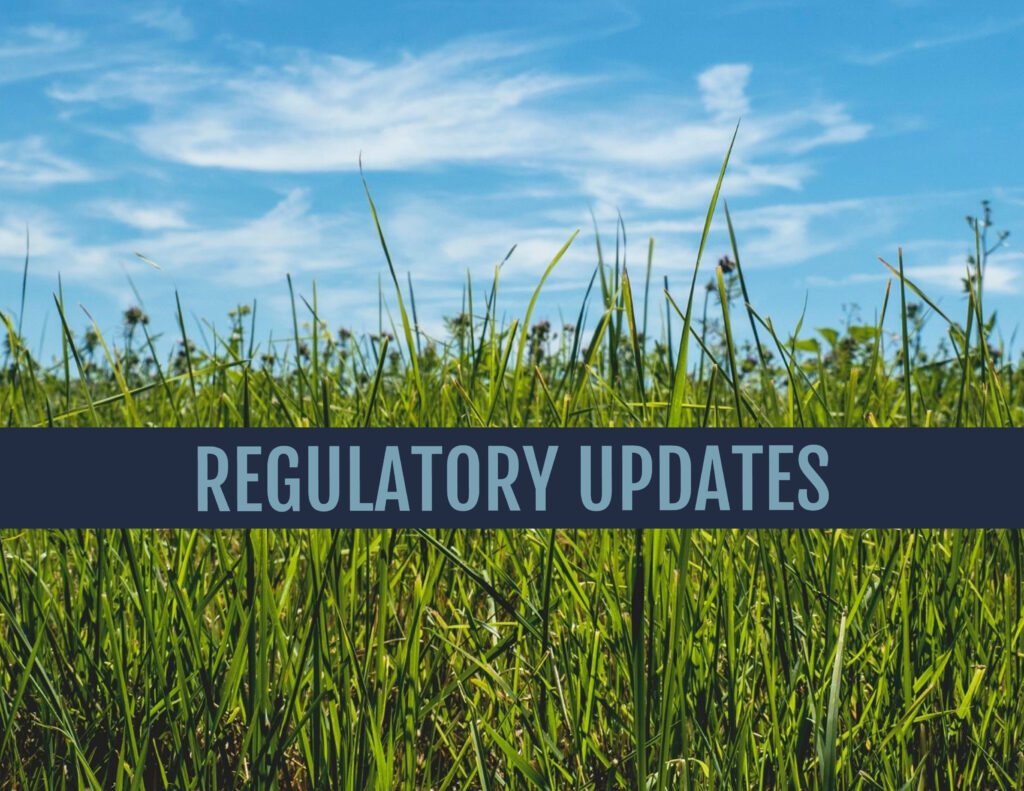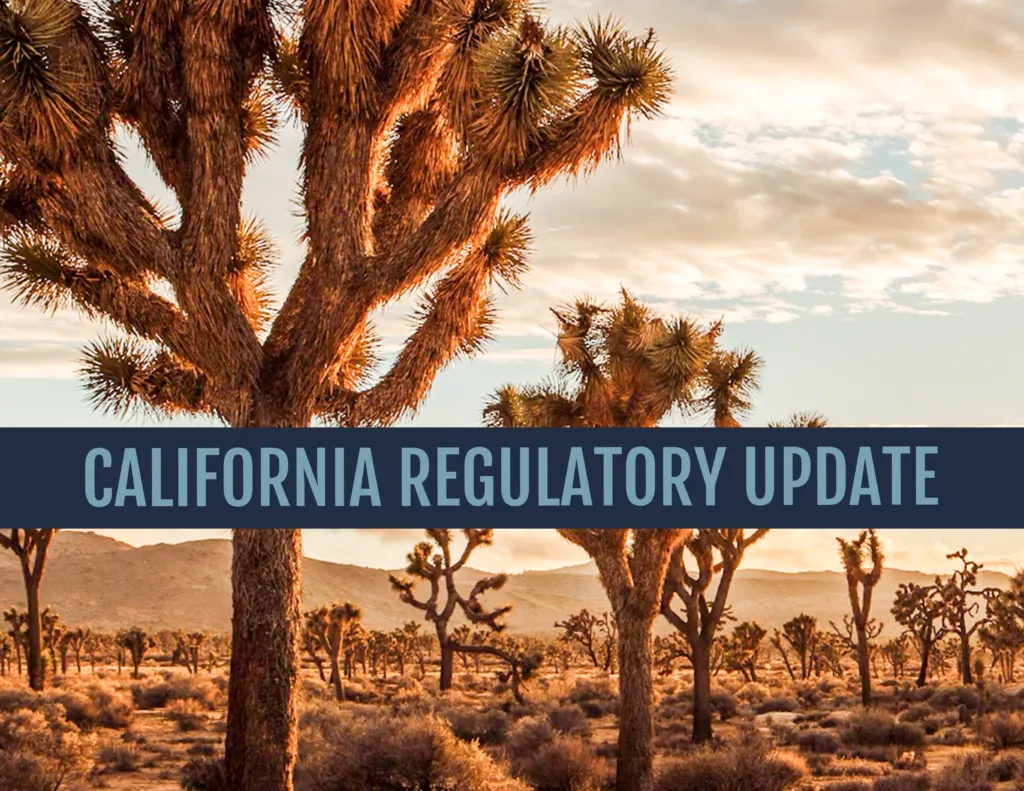
Several federal regulatory developments from the United States Fish and Wildlife Service (USFWS), National Marine Fisheries Service (NMFS), and United States Forest Service (USFS) occurred during the first quarter of 2021, including final rules, proposed rules/directives, and a finding on a petition to list a species. Below is a summary of each of these developments with links containing additional information and details.
FINAL RULES
Regulations for Listing Endangered and Threatened Species and Designating Critical Habitat
On December 16, 2020, the USFWS and NMFS published a final rule that defines the term “habitat” in the context of critical habitat designations under the Endangered Species Act (ESA). The regulatory definition of “habitat” was added to 50 Code of Federal Regulations (CFR) 424 and states, “For the purposes of designating critical habitat only, habitat is the abiotic and biotic setting that currently or periodically contains the resources and conditions necessary to support one or more life processes of a species.” The USFWS noted that this understanding of “habitat” is broad enough to include currently unoccupied areas that meet the definition of “critical habitat.” This rule was initially proposed as a result of the Supreme Court decision for Weyerhaeuser Co. v. U.S. FWS, which stated an area must be “habitat” in order to meet the definition of “critical habitat,” regardless of whether it is occupied or unoccupied. The final rule went into effect on January 15, 2021.
More information is available here: https://www.federalregister.gov/documents/2020/12/16/2020-27693/endangered-and-threatened-wildlife-and-plants-regulations-for-listing-endangered-and-threatened
Revised Designation of Critical Habitat for the Northern Spotted Owl
On January 15, 2021, the USFWS published a final rule that excludes approximately 3,472,064 acres from the critical habitat designation for the northern spotted owl (Strix occidentalis caurina) in Washington, Oregon, and California. This includes the following counties in California: Del Norte, Siskiyou, Humboldt, Trinity, Shasta, Tehama, Mendocino, Glenn, Lake, and Colusa. The final revised critical habitat rule was published in response to a settlement agreement resolving Pacific Northwest Regional Council of Carpenters et al. v. Bernhardt et al., which challenged the final rule published in 2012 (77 Federal Register 71876). It was determined that the benefits of excluding certain areas of critical habitat outweigh the benefits of designating certain areas of critical habitat. The final rule went into effect on March 16, 2021.
More information is available here: https://www.federalregister.gov/documents/2021/01/15/2021-00484/endangered-and-threatened-wildlife-and-plants-revised-designation-of-critical-habitat-for-the#page-4820
Regulations Governing Take of Migratory Birds
On January 7, 2021, the USFWS published a final rule interpreting the Migratory Bird Treaty Act’s (MBTA’s) prohibitions (e.g., pursuing, hunting, capturing, killing) to only apply to actions directed at migratory birds, their nests, or their eggs, as opposed to actions that incidentally result in the prohibitions. The final rule was set to go into effect on February 8, 2021; however, on February 5, 2021, the USFWS delayed the effective date until March 8, 2021, and initiated an additional public comment period on the rule that ended on March 1, 2021.
On March 8, 2021, the Department of the Interior (DOI) withdrew its 2017 legal opinion (M-370250), which was the basis of the final rule. This opinion was vacated by a district court (i.e., it is no longer in effect) on August 11, 2020 as part of the decision for Natural Resources Defense Council v. U.S. Dep’t of the Interior. In the letter withdrawing the legal opinion, the DOI stated that the court decision is consistent with how the DOI has historically interpreted the MBTA.
More information is available here: https://www.fws.gov/regulations/mbta/process https://www.doi.gov/sites/doi.gov/files/permanent-withdrawl-of-sol-m-37050-mbta-3.8.2021.pdf
PROPOSED RULES/DIRECTIVES
Streamlining Permitting of Rights-of-Way
On January 18, 2021, in accordance with Executive Order (E.O.) 13783 (Promoting Energy Independence and Economic Growth) and E.O. 13821 (Streamlining and Expediting Requests to Locate Broadband Facilities in Rural America), the USFWS proposed to streamline its right-of-way (ROW) permitting process to be more consistent with other DOI bureaus (e.g., the Bureau of Land Management and Bureau of Reclamation). The proposed rule includes the following pertinent updates to 50 CFR 29.21-2 and 50 CFR 29.21-7:
- requiring the use of the Standard Form 299 (SF-299; Application for Transportation and Utility Systems and Facilities on Federal Lands) for all requests for ROW permits, instead of allowing applications in any format;
- allowing electronic application submissions (one copy only), instead of requiring hardcopy submissions in triplicate;
- requiring a standard, pre-application meeting (in person or via teleconference) for new ROWs and modifications/renewals of existing ROWs in order to better determine the amount/type of documentation needed to process an application, as well as providing the USFWS Regional Director with more flexibility in determining the documentation required;
- eliminating the requirement for an appraisal to determine fair market value or fair market rental value, and instead authorizing use of any DOI-approved methods (e.g., fee schedules);
- clarifying the requirements for the legal description and survey plat that must be provided as part of the application; and
- eliminating the application fee and periodic additional payments for processing costs, and instead requiring applicants to reimburse the USFWS for costs incurred while processing the application and monitoring the ROW, as well as waiving reimbursement for state or local governments or agencies, federal agencies, and private individuals or organizations that will contribute to the mission/purpose of the National Wildlife Refuge System.
The comment period ended on March 22, 2021. The received comments are available here: https://www.regulations.gov/document/FWS-HQ-NWRS-2019-0017-0001
Operating Plans and Agreements for Powerline Facilities
On December 10, 2020, the USFS published a proposed directive to add Chapter 80 to Forest Service Handbook 2709.11, which would provide guidance on vegetation management, routine maintenance, and inspections of power line facilities within and adjacent to their ROWs on USFS land. This guidance includes collaborating with electric utilities to develop comprehensive operating plans/agreements that cover reliability and fire mitigation activities, while also minimizing impacts to sensitive resources. The proposed directive would implement Section 512 of the Federal Land Policy and Management Act (as amended by the Consolidated Appropriations Act of 2018), which requires operating plans and agreements for power line facility maintenance and vegetation on USFS lands. The comment period ended on January 11, 2021.
More information is available here: https://www.federalregister.gov/documents/2020/12/10/2020-27104/forest-service-handbook-270911-chapter-80-special-uses-operating-plans-and-agreements-for-powerline
Vegetation Management Pilot Projects
On December 10, 2020, the USFS published a proposed directive to add Chapter 2740 to the Forest Service Manual and a new clause to Chapter 50 of Forest Service Handbook 2709.11, which would provide guidance for authorizing vegetation management pilot projects on USFS land outside of the ROW for power line or natural gas facilities. The pilot projects would allow utilities to conduct voluntary vegetation management in areas up to 200 feet or 150 feet (from either side) from a power line or natural gas facility ROW, but not the pruning or removal of hazard trees outside of the ROWs for these facilities. The proposed directive would implement Section 8630 of the Agriculture Improvement Act of 2018, which gives the USFS discretion to issue permits for vegetation management pilot projects under lower liability standards to utilities with special use authorizations for power line or natural gas facilities. The comment period ended on January 11, 2021.
More information is available here: https://www.federalregister.gov/documents/2020/12/10/2020-27103/forest-service-manual-2740-forest-service-handbook-270911-chapter-50-special-uses-management
FINDING ON A PETITION TO LIST A SPECIES
90-Day Finding on a Petition to List Southern Oregon and Northern California Coastal Spring-Run Chinook Salmon
On May 4, 2020, ecologist Rich Nawa of the Siskiyou Project submitted a petition to identify the Southern Oregon and Northern California Coastal spring-run Chinook salmon (Oncorhynchus tshawytscha) as a separate Evolutionarily Significant Unit (ESU; i.e., genetically distinct) from the fall-run Chinook salmon, list the ESU as threatened or endangered under the federal ESA, and designate critical habitat concurrent with the ESA listing. The petition stated that the spring-run Chinook salmon populations have significantly declined over the last 20 years due in part to habitat impacts caused by dams, logging practices, road building, and mining operations; commercial and recreational fishing; and disease or predation. In 1999, the NMFS reviewed west coast Chinook salmon populations in Washington, Oregon, Idaho, and California and determined that the ESU for Southern Oregon and Northern California Coastal Chinook salmon included the spring-run and fall-run salmon, and did not warrant listing under the ESA.
On March 16, 2021, the NMFS announced a 90-day finding on the petition, in which it was concluded that the spring-run Chinook Salmon may qualify as an ESU, and stated that a status review will be conducted to determine if the petitioned action is warranted. The NMFS is soliciting scientific and commercial information relevant to the petitioned action until May 17, 2021.
Comment on the petitioned action here: https://www.federalregister.gov/documents/2021/03/16/2021-05338/endangered-and-threatened-wildlife-90-day-finding-on-a-petition-to-list-southern-oregon-and-northern


